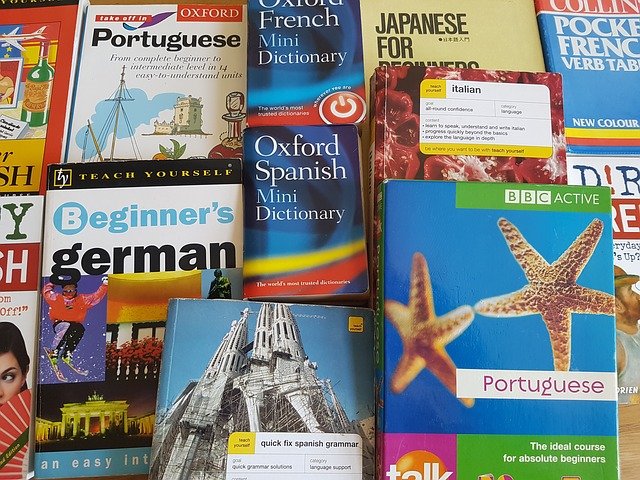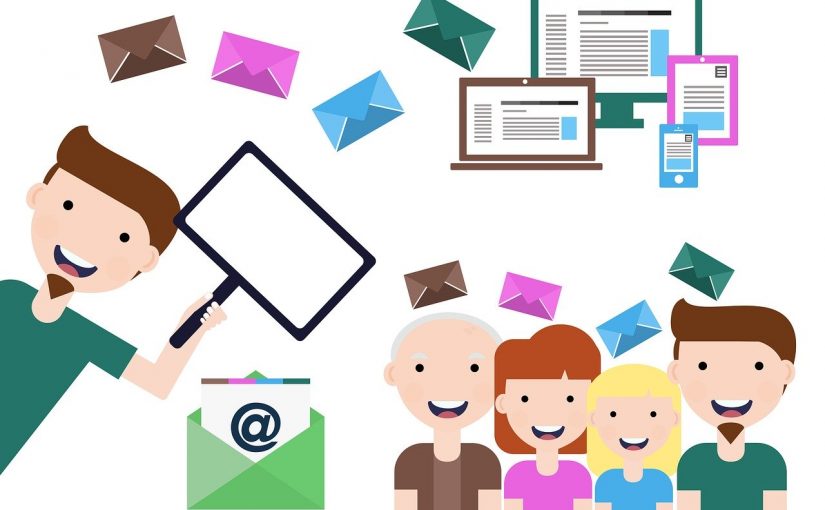Saving money is not easy, but you know it is a must. You have already taken the most important step to save money month by month, and that is to look for information on how to do it.
There are no magic tricks to get you to save, and discipline is important, yet saving is possible if you put your mind to it.
With these tips strictly applied, you will be able to increase your saving capacity and be prepared for all kinds of unforeseen events. You will see how small savings that seem insignificant can change your life.
Having a plan to save money is fundamental, but that is not the only important thing to see your bank account grow and improve your home economy.
5 tips to save money that you shouldn’t miss
CONTROL YOUR EXPENSES
Earning money costs a lot, but when you have it in your account the money flies, doesn’t it?
The first step to start saving is to control your expenses in detail. If you don’t know exactly how much you spend and on what, it’s impossible to optimize your savings. That’s why you need to spend at least 2 or 3 months writing down absolutely all your expenses in an excel spreadsheet. The apps for the more technological ones and the paper and pen for the analog ones are also valid, the important thing is to write down EVERYTHING, even tips or if you buy a pack of gum.
Once you have all your expenses for a month, you can group them in categories to have an overview and order them by priority.
The best way to save is to eliminate unnecessary expenses, those that do not bring you much. Fixed expenses, food and necessities are things that are difficult to save on, since, in spite of being able to eat cheaper or not go to the gym, it is important to live well and enjoy the day to day.
The category that makes the difference between saving and not saving and therefore the first one to control is whims.
Things like traveling or eating out are things you can perhaps afford without problems, but which prevent you from saving. You can also see how some fixed expenses can be reduced in some way, by better projecting weekly or monthly purchases, establishing a good closet fund so that you do not have to buy clothes continuously or investing in the home to save energy.
ESTABLISH YOUR SAVINGS PRIORITIES
It’s all about priorities. EVERYTHING.
For someone going out to dinner once a week may be a must, and for others it may be silly, but going to a gym is a must.
All postures are equally respectable, what is not possible is that everything is a priority. If all expenses are considered a priority it will be impossible to save and get out of the rat race for many years to come, so we all have to have expenses in the whims section and be willing to cut them down if necessary.
If you were to lose your job right now and have to live on less money per month, you could surely cut back here and there and get it, so you can also do it without losing your job.
Start little by little, eliminate some of the expenses of those who do not contribute anything and you will see how at the end of the month you have an extra saved and you have not missed that expense at all.
Personally, I used to ask for take-out food several times a week, which ended up meaning quite a lot of money at the end of the month. Nowadays I control myself (it costs me, like everyone else) and I ask for a maximum of once a week, saving a good amount of money at the end of the month.
This control applied to different expenses can be the difference between spending more than you earn month to month or saving hundreds of euros. It is not a question of eliminating all the small pleasures, but to moderate with the expenses and not to live like a rich person without being it.
DON’T BUY ON CREDIT. PLAN YOUR SAVINGS
Living on loans and getting into more and more debt is very common, but you should avoid it at all costs.
Twenty years ago people took out a loan to buy a house, which they used to pay back in about 10 years, which is quite reasonable.
In order to buy televisions, computers or to go on vacation, what you did was to save until you had the money to do so, something that is not done many times nowadays. In the past, people who didn’t have money to go on vacation would not go, saving that expense and perhaps being able to go the following year.
Now someone who can’t go on vacation has no problem asking for a loan to get it, which not only means spending money that you don’t have, but also entails huge expenses in interest. Things bought on credit cost a lot more money.
A very good way to save more money is to draw up a household budget, a budget that takes into account all your expenses and how much money you can devote to each category.
My advice is not to draw up the budget now, as it will be too theoretical. If you don’t know how much you spend on average, you will not be able to make a realistic estimate of how much you would like to spend. First, control your expenses, and once you know that, get on with the budgeting later.
Making a household budget is not difficult, you just have to decide how much money you want to spend per month or per year on each thing.
PAY YOURSELF FIRST – TREAT SAVINGS AS AN EXPENSE
I think this is one of the best money saving tips anyone can give you. Treat savings as an expense, like a bill that you are charged on the first of the month. Money flies, and if you charge 1,500 euros at the end of the month you have 0 left, but surely if you charged 1,300 euros the same thing would happen and you would live just as well.
That’s the key, in paying you first, in saving before spending. You’ll live just as well, and you’ll also save money, so your personal finances will be much better. Decide how much money you want to save, and from now on make that money automatically disappear at the beginning of the month from your account, as if you had spent it.
Without realizing it, months will go by and your savings will grow, without seeing your quality of life diminish. You can put that money in a savings account or in a savings plan, but I think the best option is to invest those savings.
SMALL SAVINGS MEAN THOUSANDS OF EUROS
Many people despise small expenses and still wonder how to save if I earn little. That, no doubt, is the fault. We would all like to save a lot of money, but we have to start little by little. Take care of small expenses: A small hole sinks a boat. – Benjamin Franklin
Here are two examples that will show you the importance of small savings, since in the long term these involve thousands of euros.
SAVING ON COFFEE
Do you drink coffee?
Imagine someone who drinks two coffees a day, without exception. You have several options to do so:
Imagine 3 different scenarios.
SCENARIO 1. LET’S GO TO THE BAR
We all like to have our coffee at the bar.
There’s nothing to prepare or clean and it’s a great time to unwind, but how much does it really cost?
Let’s imagine that a coffee costs us 1.2 euros. By drinking 2 coffees a day, we’ll spend 2.4 euros a day, 72 euros a month, 864 euros a year (YES, 864 euros a year for coffee!)
If you are a mileurist like many, drinking coffee at the bar means spending a month’s salary every year on coffee.
Seen like this, it seems crazy to drink two coffees a day at the bar.
SCENARIO 2. CAPSULES, MODERN STYLE
Since the bar seems expensive to us, we have switched to the capsules that are worn now because they are much more “chic” than using a traditional coffee maker and we have to be fashionable.
How much does it cost us to drink coffee with the Nespresso or similar? Each Nespresso capsule costs about 0.4 euros. We will spend 0.8 euros per day, 24 euros per month, 288 euros per year.
The bill is very low compared to the first scenario, but 288 euros per year on coffee is still a lot of money.
SCENARIO 3. LIFETIME COFFEE MAKER
Seeing the expense in the other scenarios we decided to try the traditional coffee maker to save a little. How much will we spend?
Assuming that a cup contains about 8 grams of coffee and that 1 kg costs 10 euros, we can make about 125 cups for 10 euros, resulting in 0.08 euros per cup.
We will therefore spend 0.16 euros per day, 4.8 euros per month and 57.6 euros per year.
Although it may seem a small saving, the first case represents 864 euros per year in coffee, the second 288 euros and the third 57.6 euros.
The difference is 800 euros between the first case and the third, a figure that in some cases can mean a whole month’s salary.
If we think about the long term, in 10 years someone who stops going to the bar to start drinking coffee at home can save more than 8,000 Euros, a real barbarity for something as insignificant as coffee.
Examples like this show the potential of small expenses and make it clear that it is absolutely worth saving even if it is an extra 1 euro a day.
Even micro expenses that look like misery, in the long run will be a lot of money.
SAVE ON INTERNET AND PHONE
Internet and telephone are a luxury that we all have nowadays, although not all of us pay the same for it.
How much do you pay per month for your internet and phone? People who don’t make ends meet but who have internet and phone plans with television and everything the company offers is unfortunately much more common than it seems.
Let’s see with a few quick numbers the difference between having a complete plan with one of the typical companies or a basic plan with one of the cheap companies we have at our disposal today.
The complete pack (fiber optics, television and some mobile) costs about 100 euros per month, assuming 1200 euros per year, while the basic pack of a cheap company costs, including internet and mobile, about 30 euros, representing 360 euros at the end of the year.
There will be people who will say that it is not the same internet, that TV channels are essential, etc., but in the end they are all excuses.
And look, the difference is similar to the case of coffee.
The difference at the end of the year between having a cheap company or an expensive one is 840 euros, which means 8400 euros after 10 years. Save on the little things, and you will see your current account rise like the foam.
TRICKS TO SAVE MONEY DAY BY DAY
MONEY DOESN’T EXIST, YOU PAY FOR EVERYTHING IN TIME
You will discover that money really doesn’t exist, and that everything you buy is with your time. This concept, although it may sound strange, will make it much easier for you to save day by day.
SAVE MONEY ON ELECTRICITY
When someone wonders how to save at home, saving on electricity is usually one of their first searches. Reducing electricity consumption, as well as water consumption, can allow you to save a lot of money month by month.
But it’s no use saving on electricity and not applying everything else, because the key is
SAVE MONEY ON GASOLINE
Saving on gas is easy if you’re careful and we try and you may already have control over where you put your gas. Spending on gas is practically inevitable since almost everyone needs the car to move from one place to another, but depending on where you put the price varies substantially.
Apart from looking at the price when we drive, there are websites that allow us to compare the price of gas in all gas stations in the area, making it very easy to save money that way.
We can also consider using public transport more often and even go on foot or by bicycle to some places… And we save that in the gym.
SAVE ON HEALTH CARE
Because even though free health care exists in your country, it probably doesn’t cover all options. And even if you have good health insurance, you may have to consider how to save on health care.
Unfortunately, skimping on health is not good, but skimping is not the same as saving. Have you ever considered health tourism? It consists of going to a country where the treatment you need is provided by highly specialized doctors but at much more reasonable prices than those you can find in your own country, and with all the guarantees.
For example, it is quite common for residents in the U.S. and Canada to travel to Mexico to be visited by Los Algodones dentist. Los Algodones Dental has become a reference place for dental tourism, due to the high competence of its professionals at much more affordable prices than its northern neighboring countries.
Finding specialized clinics in developing countries, where you can also take advantage of tourism, is a good way to save money. Similarly, and without having to leave your country, possibly any private doctor in a town will charge less for his consultation than a doctor of the same specialty in the city. You only have to look.
And never, ever wait for your health to get worse. Visit the specialist as soon as you notice the discomfort, or the treatment will be even more complicated, and therefore, more expensive.
SAVE BY TAKING ADVANTAGE OF OFFERS
You probably buy online, don’t you?
And it’s great, because there are many ways to save money by taking advantage of offers and discounts. But watch out for this, because it’s a double-edged sword. Buy only what you really need, don’t buy just because it’s on sale. Be proactive and get ahead of the birthday, Christmas, anniversary gifts… That’s why it’s good to take advantage of offers, but control your spending and always keep in mind that the objective is to save, not to end up spending more than you want.









